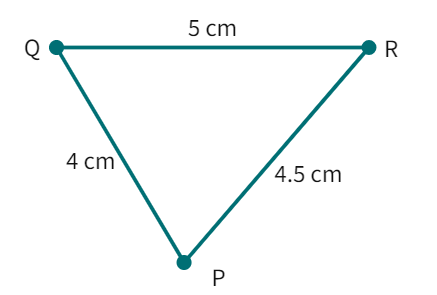Congruence of Triangles
We often come across identical copies of the same object. The grocery items aligned along the aisle in a supermarket. The architetural patterns curved into monumental domes, a pizza cut into equal sized pieces.
Do you remember what the mathematical term for describing such figures was? Indeed they are called

When two objects are said to be ‘Congruent’- it means that they are equal in all respects. In the case of figures, their shapes and sizes are both the same.
Draw two circles having the same radius on a piece of paper and try placing one on the other. What happens? They cover each other completely and we call such circles -
In the above panel, drag the three circles given and try to place them on the circle of the fixed circle. What can we deduce here? Are the given circles congruent?
Now, why are we studying congruence?
As mentioned earlier, when we go to the supermarket, what do we see? We see multiple products that look identical. If we go shopping for say- pots, we would most likely, be greeted with a heap of hundreds of identical pots. All stacked in a heap together.
Now, how are these all manufactured on such a large scale?
This is were congruency comes in.


Another more common and frequently observed example will be an ice tray in our home refrigerator. It can be seen that all the molds used for shaping the ice, all have congruent dimesions and depths (whatever the shape may be).
Thus, we can conclude that whenever identical objects have to be produced, the concept of congruence is used in making the mold/cast.
In this way, we can find numerous examples where congruence of objects is used in our day to day life.

Let's get back to discussing the congruence of figures- which in this case are two triangles. We already are aware that for two triangles to be congruent- all the sides and angles of one triangle need to be equal to all the corresponding sides and angles of the other triangle.


In the above figure, are the two triangles congruent to each other?
If ∆ PQR is congruent to ∆ ABC, we write
∆ PQR ≅ ∆ ABC.
Note: The term ∆ PQR ≅ ∆ ABC, implies that the sides of ∆ PQR fall on corresponding equal sides of ∆ ABC and so is the case for the angles that is:
PQ = AB , QR = BC and RP = CA etc.
Similarly, for the angles. So-
∠ P covers ∠
There is correspondence between the vertices as well i.e. P corresponds to A, Q to B, R to C and so on.
Note: For the reasoning seen above, it is, therefore, not correct to write ∆QRP ≅ ∆ ABC. It is important to write the corresponding vertices correctly for declaring the congruence of triangles in the symbolic form.
In congruent triangles, the corresponding parts are
So, it is necessary to write the correspondence of vertices correctly for writing of congruence of triangles in symbolic form.
Note that in congruent triangles corresponding parts are equal and we write in short ‘CPCT’ for corresponding parts of congruent triangles.
